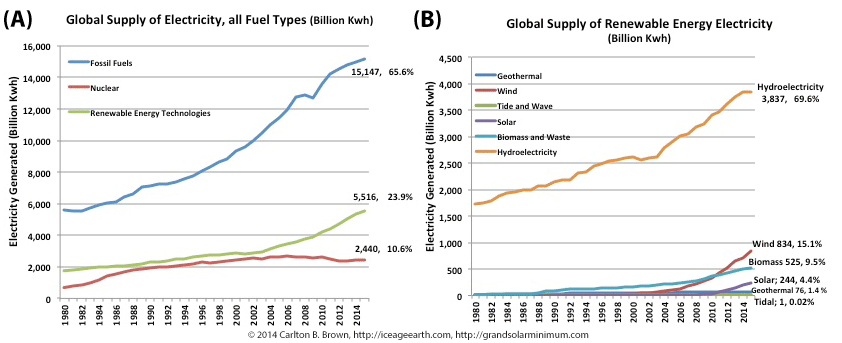Pivotal to ensuring that a renewable energy switch moves ahead rapidly is the need to send the right messages about climate change, and provide the economic incentives that will motivate business and society as a whole to make changes. These messages must also convey the reality of our finite and dwindling energy and water reserves, and the damage we are doing (greenhouse gases, pollution) by using these resources. By refocusing the climate and resource messages governments can then engender the right sense of urgency and motivation for people and businesses to act and help switch the energy system to renewables.
Higher oil prices achieved through the perception of energy scarcity and the unveiling of catastrophic risks will be a more powerful motivator for businesses, transportation, and industry generally (i.e., the largest energy users) to rapidly switch the energy system than the perceived need to mitigate anthropogenic global warming.
Figure A) In 2015 fossil fuels and nuclear energy supplied more than three-quarters of electricity generated. Between 1980 and 2015, these non-renewable energy sources supplied most of the growth in electricity generation (75 percent). In the last decade, non-hydroelectric generation by renewables has grown to account for 7.2 percent of global electricity generation, with hydroelectricity accounting for 16.6 percent. Electricity generation with renewables has shown a 10-year compounded annual growth rate of 5.3 percent, and non-hydroelectric renewables 16 percent. B) Wind, biomass, and solar sources of renewable energy are beginning to make an impact in the market.[iv]

